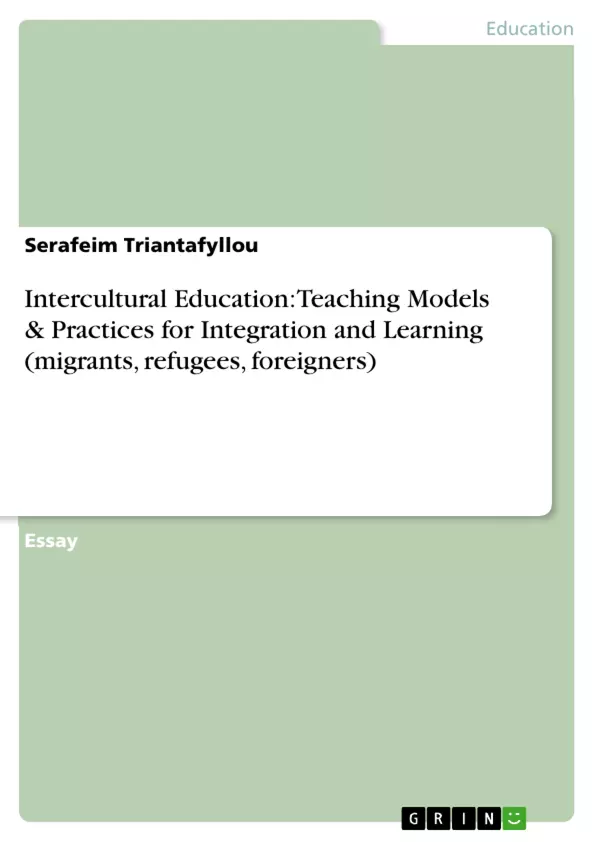The presence of foreign language learners in the modern school makes it multilingual and multicultural by definition and at the same time demands their equal participation in the learning process through individualised and/or differentiated teaching. Based on a work plan, e.g. "going to the market", whose main objective is the verbal and non-verbal expression of students in different communication situations, the aim is to design, in brief, an indicative scenario that uses a) the communicative approach, b) learning strategies, in order to introduce students to communication situations they will encounter in the market.
Inhaltsverzeichnis (Table of Contents)
- Topic 1: The presence of foreign language learners in the modern school
- Teaching Scenario: Let's go to the Market for shopping
- Brief presentation of the scenario
- Duration
- Objectives
- Listening comprehension
- Written composition
- Use of the spoken language
- Use of the written language
- Content of the teaching and learning intervention
- Running the teaching and learning intervention
Zielsetzung und Themenschwerpunkte (Objectives and Key Themes)
The main objective of this work is to design a teaching scenario for foreign language learners in primary school, focusing on communication in a market setting. The scenario utilizes a communicative approach, learning strategies, and language processing-oriented teaching to help students develop effective communication skills in everyday situations.
- Communicative language teaching approach
- Integration of learning strategies
- Utilizing Information and Communication Technologies (ICT) in language learning
- Addressing the needs of multilingual and multicultural classrooms
- Developing practical communication skills in real-world contexts
Zusammenfassung der Kapitel (Chapter Summaries)
The text presents a detailed teaching scenario for a primary school lesson focused on shopping at the market. The scenario incorporates various communicative approaches and learning strategies, aiming to improve students' listening, writing, speaking, and reading skills in a practical, everyday context. It emphasizes the importance of considering the students’ age, needs, and prior experiences when designing teaching materials. The use of ICT resources, such as online dictionaries and e-books, is also integrated into the lesson plan. The scenario provides specific learning objectives and activities to achieve these goals, including understanding vocabulary, grammar, and paralinguistic elements.
Schlüsselwörter (Keywords)
Intercultural education, communicative language teaching, learning strategies, Information and Communication Technologies (ICT), multilingual classrooms, primary education, teaching scenario, market communication, vocabulary acquisition, grammar instruction, language processing.
- Arbeit zitieren
- Serafeim Triantafyllou (Autor:in), 2018, Intercultural Education: Teaching Models & Practices for Integration and Learning (migrants, refugees, foreigners), München, GRIN Verlag, https://www.hausarbeiten.de/document/1513040


